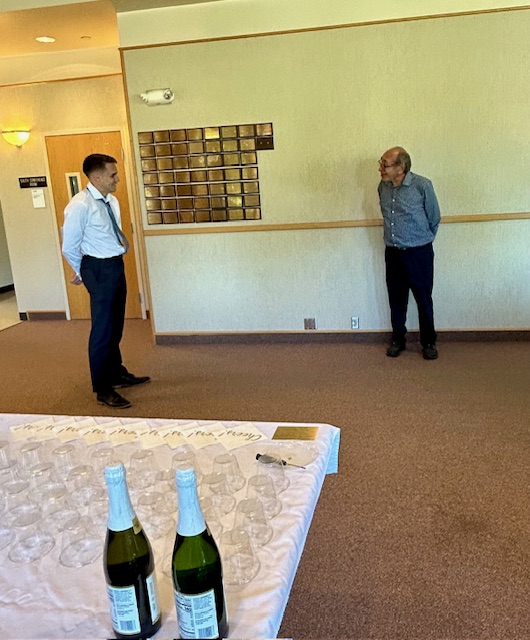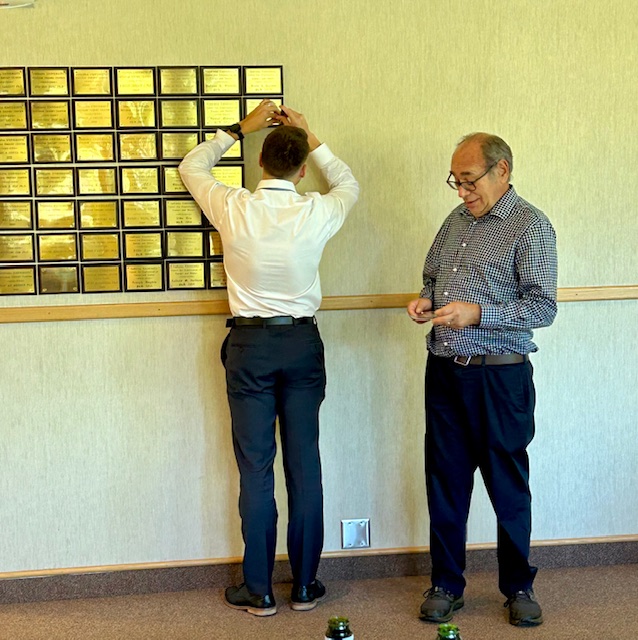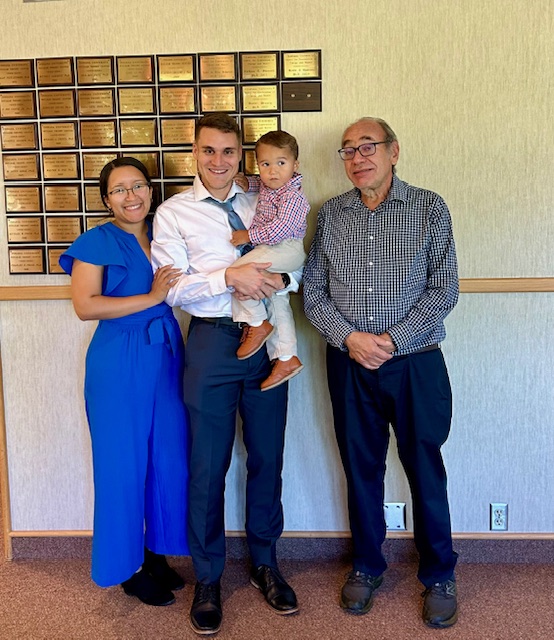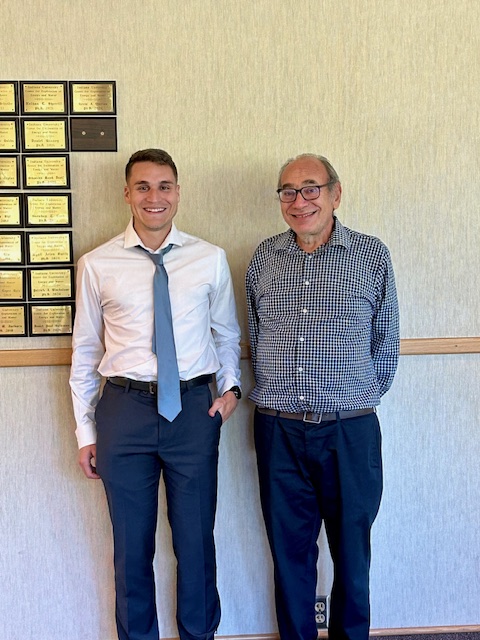Our celebration of Dr. Jorge Morales's successful doctoral dissertation defense, with his supervisor, Dr. Chuck Horowitz.
Dissertation Title: Neutron Star Mountains: Theory and Observations
Abstract: Continuous gravitational waves have eluded detection for more than two decades. The most promising sources of continuous gravitational waves are sustained, large-scale, and non-axisymmetric deformations on the elastic crust of neutron stars. These are informally known as ``mountains''. In this thesis, we estimate the maximum mountain that the neutron star crust can support. We study analogies between observations of Solar System bodies and neutron star properties. Recently, anisotropies in the solid innermost inner core of the Earth were observed. We consider a simple two-dimensional model of macroscopic anisotropies in the neutron star crust and find that changes in rotation can lead to the emission of detectable continuous gravitational waves. Moreover, our anisotropic crust model can explain some properties observed in populations of milisecond pulsars. We use finite-element simulations to corroborate our results with more realistic three-dimensional models of anisotropic neutron star crusts under rotational changes. We perform two of the most sensitive continuous gravitational-wave searches on the central compact objects of two supernova remnants - Cassiopeia A and Vela Jr. Moreover, we develop and implement an algorithm that increases the computational efficiency of some continuous gravitational-wave searches while retaining sensitivity.





